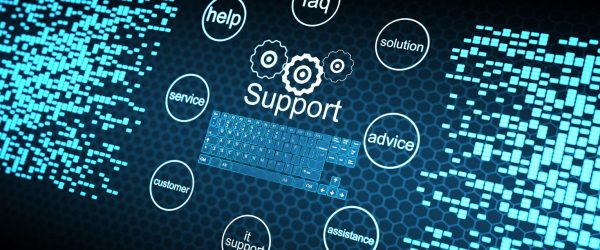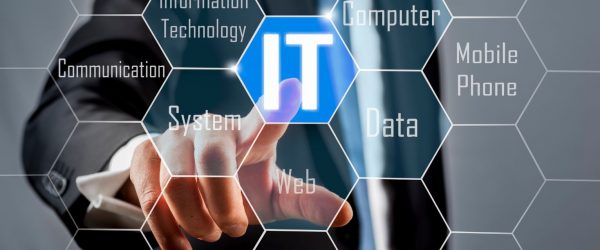During the Covid-19 period, eLearning emerged as the prevailing norm. With schools and colleges being closed, online education has stepped in to provide a solution. The future of classrooms has been revolutionized by eLearning apps.
Technology continually advances, enhancing efficiency and improving our lives. Online education stands as a prime example of this progress. The fusion of Information Technology and Education has yielded numerous benefits for society, thanks to the integration of Machine Learning and Artificial Intelligence.
Let’s delve into the subject and explore how Machine Learning is shaping the future of eLearning. Before we do that, let’s briefly examine what Machine Learning is and explore some of the ways IT and Education have intersected thus far.
How can Machine Learning be defined?
Machine Learning (ML), which falls under the umbrella of Artificial Intelligence (AI), encompasses algorithms that empower systems (referred to as machine learning models) to learn and improve autonomously, without explicit programming. Its purpose is to make predictions by identifying patterns within the provided data.
Machine Learning and Artificial Intelligence are closely interconnected. When predictions fall short, Artificial Intelligence steps in. AI algorithms undergo an automatic process of analyzing data to identify shortcomings and prevent future errors, eliminating the need for manual reconfiguration.
In the realm of eLearning, Machine Learning and Artificial Intelligence play a significant role by utilizing predictions, algorithms, and analytics to create a more personalized and tailored eLearning experience.
The Convergence of Information Technology and Education
The fusion of Information Technology and Education has opened up new avenues for:
- Experiential Learning
Experiential learning involves learning through hands-on experience. In the past, flight simulation software offered students a chance to explore avionics and instrumentation, but today, students can immerse themselves in even more realistic experiences using Virtual Reality headsets. This shift indicates technology’s aim to enhance learning by emphasizing experiential, hands-on approaches.
- Online Teaching
The advent of video conferencing apps like Skype has revolutionized one-to-one online teaching sessions. Nowadays, you can easily participate in live webinars from anywhere in the world, without any inconvenience. This trend has gained immense popularity, making online teaching accessible and convenient for learners globally.
The Significance of Machine Learning in eLearning
Now let’s shift our focus back to the main topic and explore how Machine Learning is enhancing the convenience of e-Learning.
- Leveraging Past Performance
Machine Learning algorithms have the ability to analyze the performance data of students registered in the Learning Management System (LMS). By extracting and evaluating this data, the algorithms can predict the specific needs of learners based on their past performance. This enables the delivery of tailored learning sessions that cater to each student’s individual requirements, facilitating organized growth.
To illustrate, consider an online course with multiple students possessing varying learning abilities and experiences. Machine learning algorithms can dynamically adjust the course content to align with each individual’s proficiency level, ensuring the delivery of valuable and relevant material. This personalized approach prevents a scenario where advanced content is presented to those still struggling with foundational concepts, or vice versa, thus maintaining a smooth flow and enhancing the overall user experience. - Enhances Learning Engagement
When starting a course, many learners find it tiresome to go through irrelevant or unimportant lessons. However, Machine Learning algorithms address this inconvenience by offering a personalized learning approach. Learners can focus on acquiring the knowledge they desire and target specific areas of improvement, rather than endlessly navigating through redundant curriculum. This approach not only makes eLearning more exciting but also encourages greater learner involvement in the program. - Saves Time and Resources
Machine Learning, through data gathering and analysis, enables the identification of topics where students struggle the most. By adjusting the course material accordingly, machine learning algorithms emphasize strengthening weaker areas. This efficient allocation of resources helps save time and prevents wastage on training materials that do not significantly benefit skill improvement.
Additionally, as machine learning may reduce the overall course duration (as mentioned earlier), learners have more time to concentrate on relevant content and refine their skills. The integration of machine learning in eLearning also helps minimize additional payroll hours dedicated to training efforts. - Computer Vision in eLearning
Integrating computer vision into eLearning can enhance tutors’ ability to detect, monitor, and respond to students’ learning behaviors, providing valuable feedback on teaching methods.
Let’s illustrate this with an example. In a physical classroom, teachers can easily gauge students’ boredom, distractions, or stress by observing their facial expressions and body language. However, this becomes challenging in online learning settings. Here’s where AI can lend a helping hand. Through computer vision, eLearning platforms can capture real-time behavioral data of learners. Based on this data, decisions can be made regarding the provision of more engaging materials, lesson redesign, or student segmentation. In the near future, such technology is expected to be widely accessible for mass usage. - Crowdsourced Learning
Crowdsourced learning refers to the collaborative effort of two or more individuals coming together to enhance their understanding of a topic or subject. It involves the learning content requested and developed by individuals rather than a specific curriculum. Wikipedia stands as a successful example of crowdsourced learning combined with AI.
Another example is Brainly, an educational Q&A platform with a community of over 200 million students and teachers. The platform incorporates a machine learning layer that acts as a moderator, filters spam, and maintains content quality. In the future, Brainly aims to offer automated answers to certain questions, similar to the concept of a search engine but on a smaller scale, focusing on primary and secondary education concerns. - Development of Smart Learning Software
Learning platforms targeting a fun and engaging learning environment for children have experienced significant success. This has driven AI developers to make these applications even smarter. The next generation of e-Learning software incorporates machine learning features that track students’ program navigation, reactions, and proficiency levels. In essence, AI algorithms learn alongside children, with the goal of utilizing AI technology to create more efficient and effective educational apps in the future.
In conclusion
The incorporation of Machine Learning and AI into eLearning holds great potential for establishing a highly efficient educational infrastructure. This integration will not only benefit students and teachers but also extend its advantages to parents and communities at large.
Thank you for reading. For continued insights and in-depth discussions, please follow our blogs at Ezeiatech.







